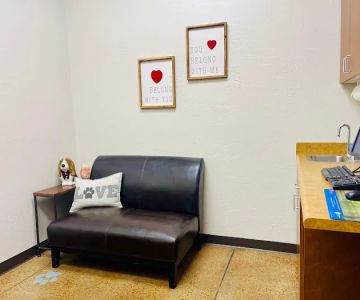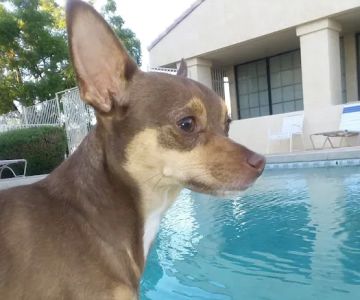How to Handle a Dog That Is Aggressive Towards Other Dogs
Dealing with a dog that shows aggression towards other dogs can be stressful for any pet owner. Whether it's an issue that happens on walks or at the dog park, dog aggression can lead to dangerous situations for both dogs and humans. Having lived through this challenge myself, I can share some practical strategies that worked for me and many other pet owners. Understanding the root causes of aggression and learning how to handle it properly can turn your walks into a more enjoyable experience and improve your dog’s behavior overall.
1. Understanding the Root Causes of Aggression
The first step in managing a dog’s aggression is understanding why they are behaving this way. Aggression towards other dogs can stem from several causes, such as fear, anxiety, territorial instincts, or even past trauma. For instance, I remember when my dog first started showing aggression towards other dogs during walks. It was clear that she felt threatened or challenged by other dogs approaching her, leading her to react defensively. By understanding the cause of aggression, you can address it more effectively and tailor your training to your dog's needs.
1.1. Fear-Based Aggression
Fear-based aggression occurs when a dog perceives other dogs as a threat and reacts with growling, barking, or snapping to protect themselves. This type of aggression is often seen in dogs that were not socialized properly as puppies or have had negative experiences with other dogs. Recognizing signs of fear aggression, such as cowering or hiding behind you, can help you address the behavior with more patience and understanding.
1.2. Territorial Aggression
Some dogs become aggressive when they feel their territory is being invaded. This could be in their home, their yard, or even on a walk in a familiar area. Territorial aggression is more common in dogs that are protective of their space and owners. If your dog becomes aggressive when near home or their resting area, this could be a sign of territorial behavior.
1.3. Lack of Socialization
Dogs that have not been properly socialized with other dogs may become aggressive when encountering unfamiliar dogs. Proper socialization during puppyhood is essential, but it’s never too late to introduce your dog to new canine friends. The more exposure they get to other dogs in a controlled environment, the better they will react to them in the future.
2. Training Techniques to Manage Aggression
Once you understand why your dog is aggressive towards other dogs, you can begin implementing training techniques to manage and reduce the aggression. In my case, working with a dog trainer who specializes in behavior modification was a game changer. Here are some proven methods that can help you address your dog’s aggressive tendencies.
2.1. Positive Reinforcement
Positive reinforcement is one of the most effective ways to train a dog to behave properly. By rewarding calm behavior and ignoring aggressive reactions, you can teach your dog that being calm around other dogs leads to positive outcomes. When my dog began to show signs of calmness while encountering another dog, I would immediately reward her with a treat or praise. Over time, she learned that staying calm was the desired behavior, reducing her aggression during walks.
2.2. Desensitization and Counter-Conditioning
Desensitization involves gradually exposing your dog to the presence of other dogs in a controlled manner, while counter-conditioning helps them associate other dogs with something positive, such as treats or playtime. This technique helped my dog significantly reduce her fear and aggression towards other dogs. I would start by introducing her to a calm dog at a distance, rewarding her for calm behavior. As she became more comfortable, we slowly decreased the distance between them.
2.3. Controlled Socialization
Introducing your dog to other dogs in a controlled and safe environment is essential for teaching them how to behave around other dogs. I found that visiting a local dog trainer’s facility, where dogs are carefully monitored, was the best approach for controlled socialization. These environments allow dogs to interact without overwhelming them, which is key for building positive associations with other dogs.
2.4. Walking on a Loose Leash
Often, a dog’s aggression on a leash comes from frustration. When a dog pulls on the leash towards other dogs, it increases the tension, which can lead to aggressive reactions. Training your dog to walk on a loose leash can help prevent these aggressive outbursts. I focused on teaching my dog to walk calmly by using a front-clip harness and rewarding her for walking at my side without pulling. This technique not only reduced her aggression but also made our walks much more enjoyable.
3. What to Do When Aggression Occurs
Despite your best efforts, there may be times when your dog shows aggression towards another dog. It's essential to handle these situations calmly and with confidence. In my experience, staying relaxed and using a firm but calm voice helped redirect my dog's focus. Avoid harsh punishment, as it can escalate aggression. Instead, calmly guide your dog away from the situation and reward them for calming down.
3.1. Redirect Their Focus
If your dog starts to show aggression, one of the best things you can do is redirect their focus. Try using a toy, treat, or even a command like “sit” or “look at me” to break their concentration on the other dog. By getting their attention off the potential threat, you help them focus on something positive and manageable.
3.2. Avoid Punishment-Based Training
While it may be tempting to use punishment-based training when dealing with an aggressive dog, this approach can backfire. Punishing a dog for aggressive behavior can increase anxiety and lead to further aggression. Instead, use positive reinforcement and redirection techniques to help your dog feel more confident and secure in social situations.
4. When to Seek Professional Help
If your dog’s aggression is severe or you’re struggling to manage the behavior on your own, it’s important to seek professional help. A professional dog trainer or animal behaviorist can assess your dog’s behavior and create a personalized training plan to address their specific needs. In some cases, medication may be recommended to help reduce anxiety or aggression, particularly if it is caused by a medical condition.
4.1. Consult a Certified Trainer
A certified dog trainer with experience in behavioral issues is the best person to guide you through more complex aggression issues. They can offer tailored advice and work with you one-on-one to improve your dog’s behavior. In my case, working with a trainer who specialized in fear-based aggression helped my dog make tremendous progress.
5. The Importance of Patience and Consistency
Training an aggressive dog takes time, patience, and consistency. It’s crucial to remember that your dog’s behavior won’t change overnight. By consistently practicing the techniques outlined above and staying patient, you’ll see gradual improvements. Celebrate small victories along the way, and keep working towards building a trusting and calm relationship with your dog.
Through consistent training and a solid understanding of your dog’s behavior, you can reduce aggression and help your dog become more relaxed around other dogs. Whether it’s through positive reinforcement, controlled socialization, or professional training, there’s always a way to improve your dog’s behavior. The key is to stay calm, consistent, and compassionate as you work through the process together.











